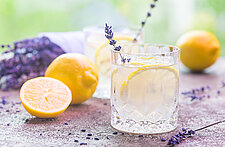In this Symrise Blog Series, we will touch on Bitters and Shrubs, the natural botanical flavors that have once again emerged on the cocktail and food scenes. We will begin this series with bitters.
Bitters are not necessarily bitter and they are necessarily roots. Think of bitters as a garden basket of flavors; but even that’s too limiting. Bitters may include roots such as gentian; barks such as cinnamon; seeds and seed pods such as cloves and anise; fruit peels, herbs and spices. Bitters are used in cocktails or bitters may be drinks in and of themselves.
Bartenders (really, Mixologists) love to create signature creations with just that “special touch,” and bitters often round out the unique flavor notes they are trying to achieve. For example, if a Mixologist wants a bitters flavor profile that is a combination of vanilla bean, orange and cinnamon that is very possible.
What bitters have in common is the way in which they are made. The ingredient combinations are steeped in high-proof alcohol under very strict conditions for several weeks and then they are carefully strained. After straining, the resulting liquid may then have herbs or spices that are carefully added. The recipe may call for colors at that point such as caramel.
The classic bitters flavor is Angostura, a product dating well back into the 19th Century, and made very popular by the famous Manhattan cocktail. However, for several decades bitters seemed to have faded from use. Suddenly, bitters have roared back into the flavor scene.
CLICK HERE to view Culinary Chronicles: Bitters Invade the Kitchen
The Re-emergence of Bitters
It is difficult to pinpoint how or when, bitters re-emerged but several trends seemed to have come together to boost their popularity.
The Herald-Palladium newspaper, January 29, 2014, interviewed several bartenders and learned that the trend seems to have taken off with craft beers, the resurgence of the cocktail and flavor fusions and the willingness of Millennials to experiment. Many people experiment with making their own bitters at home, just like home brewers.
In an article entitled: “Bitters Renaissance: Exotic Flavors Add Seasoning to Cocktails” in the Orlando Sentinel (May 1, 2014), we are introduced to a company called Bitterman’s who, in 2007, introduced more than a dozen bitters flavors. According to the company:
“"We were inspired specifically because we wanted to give bartenders new tools to be able to create the next-generation classic cocktails," says Bittermens co-founder Avery Glasser. While the company's grapefruit bitters offered a refreshing change to the more classic orange bitters, the Xocolatl Mole variety pushed the boundaries by infusing cacao, Mexican cinnamon and hot peppers.’”
CLICK HERE to view Spotlight on Sother Teague - Beverage Director at Amor y Amargo
Bitters have become so flavorful that they are also seen as a light summer drink in and of themselves; in fact one bartender interviewed for the Herald-Palladium article has customers who simply like to drink bitters and club soda.
In another trend, perhaps one totally unexpected, bitters are now finding their way into foodservice. Chefs are now adding bitters to sauces and marinades. It may only be a matter of time before we see the sophisticated cachet of bitters added to packaged products.
Product developers should take note that this emerging trend could mean exciting launches in the future or a re-invigoration of an existing product.





